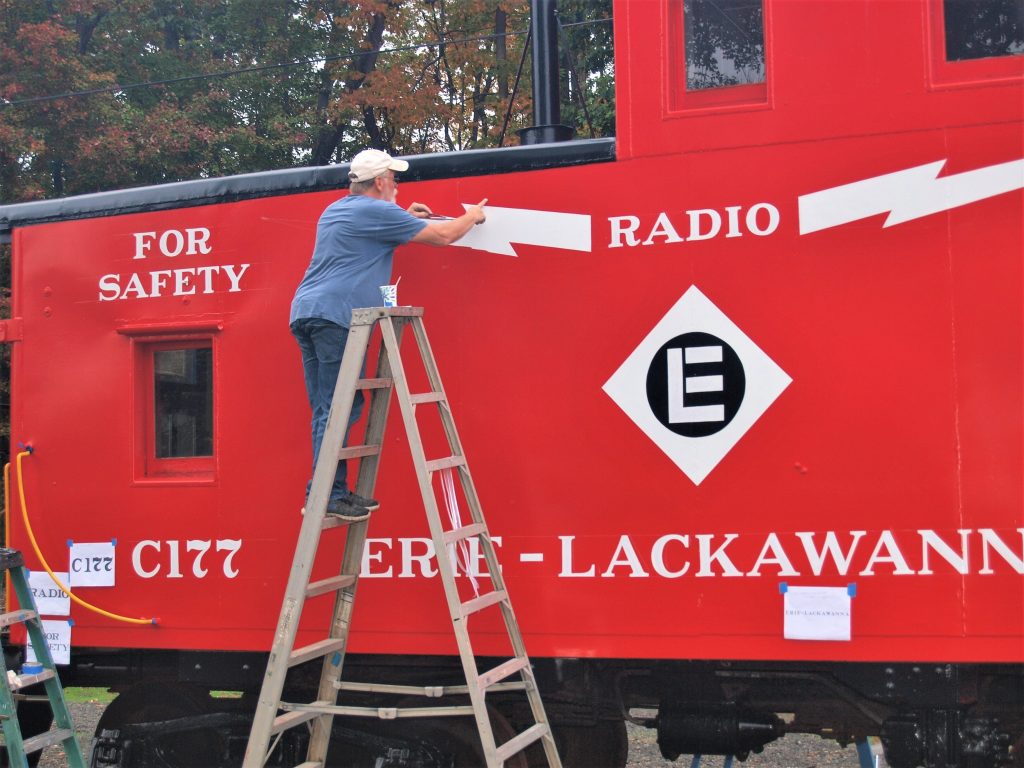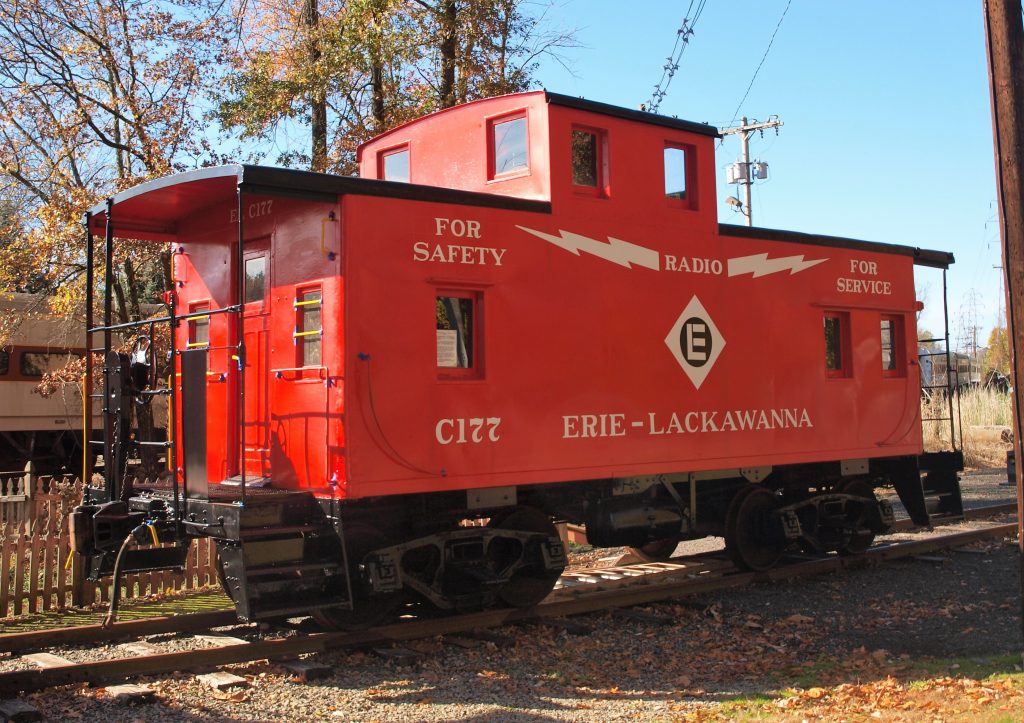Erie-Lackawanna Railroad Caboose No. C-177
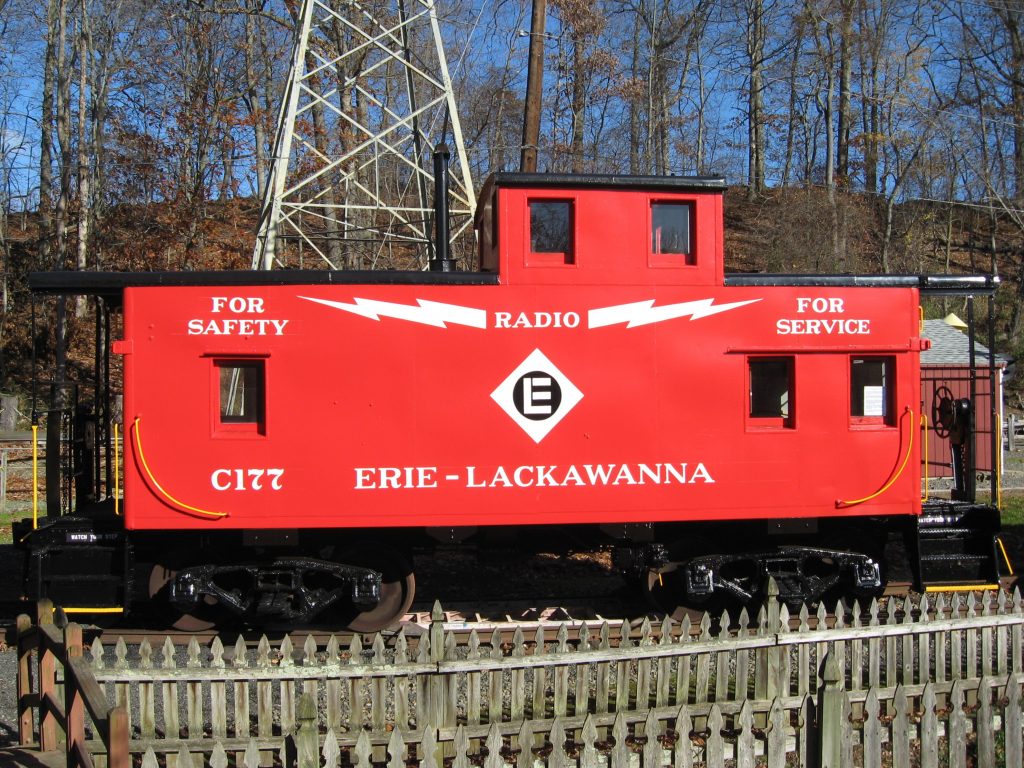
Cabooses are often among the most unique pieces of equipment on a railroad. By the 1950’s railroad car builders began offering standard cabooses, yet the cars themselves could vary from railroad to railroad. In the 1940’s however, most American railroads built their own “home grown” – style waycars, and the Erie Railroad was no exception.
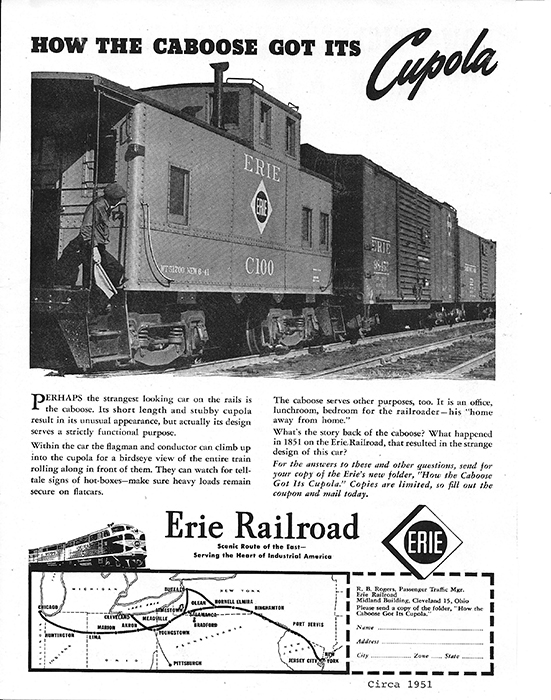
For decades the Erie had relied on wooden cabooses for their freight train crews that were built between 1914 – 1921. With war clouds forming, the Erie built 70 riveted steel cabooses at its Dunmore, PA shops in June – August 1941. When it became evident that World War II was drawing to a close, the War Production Board granted the Erie Railroad permission to build a second series of 100 additional cabooses, numbered C170 – C269, this time with all-welded construction and equipped with hand-me-down freight car trucks.
The C170 series cabooses were built in March 1946 from “kits” at Dunmore Shops, with Youngstown Steel Door Company presumably being the supplier of the fabricated materials required to piece the kits together.
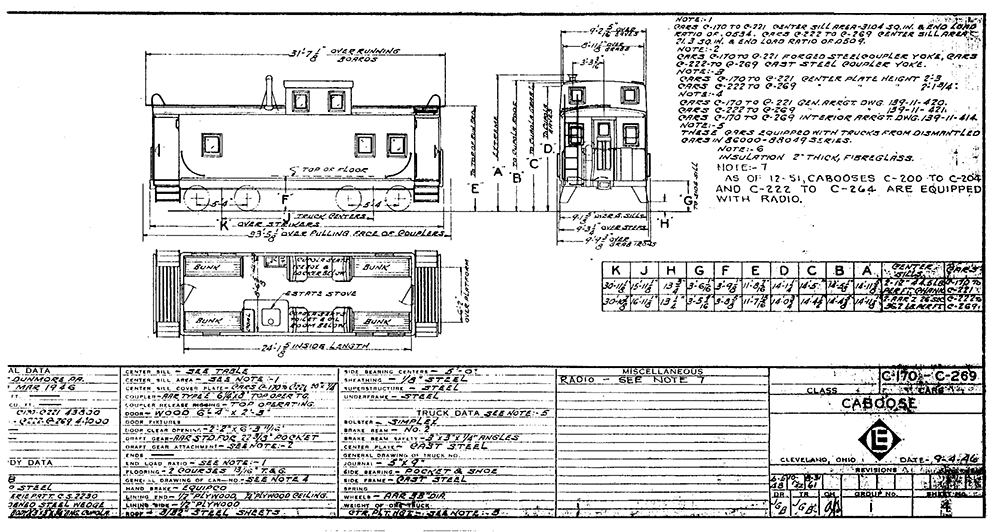
The 1946 Erie cabooses were equipped with trucks fitted with leaf springs and this made them very hard-riding cars and extremely unpopular with freight crews. Drip rails over the windows, were in reality half-sections of steel pipe, welded in place to keep the side windows clear and later became a standard feature on Erie steel cabooses.
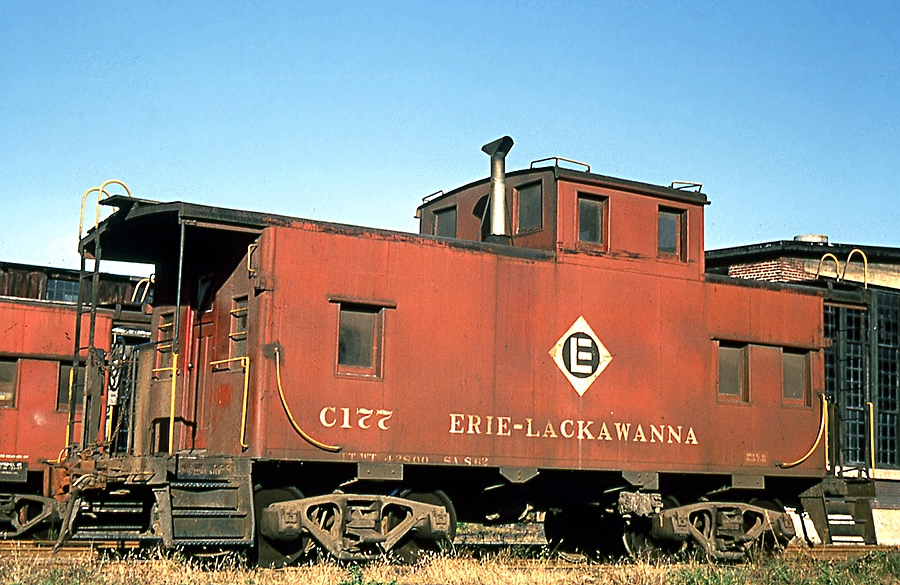
The C170 – C269 series cabooses at first supplanted the Erie’s wooden cabooses on road freights. This duty was short-lived, as better-riding bay-window cabooses became the preferred caboose for road trains in 1953. The “Dunmore” (as they were nicknamed) then settled into their primary role as local service cabooses. They were commonly found on drills and yard jobs across the entire Erie (and later, Erie-Lackawanna) system.
Upon the merger of the Erie Railroad with the Delaware, Lackawanna & Western Railroad in October 1960, caboose C177 became part of the new Erie-Lackawanna Railroad (EL), but retained its original Erie road number, C177.The C177, in EL years, moved around… it worked on the Bangor & Portland Branch in the mid-1960s, migrating to Ohio for local service there in the early 1970s. In April 1976, the EL became part of the huge Conrail (CR) system. C177 was removed from freight service and was repainted work train gray and renumbered CR 46197, and ultimately used on Maintenance-Of-Way trains.
In late-1985 Conrail retired the former Erie C177 and donated the car to the Jersey Central Railway Historical Society Chapter of the National Railway Historical Society, whose members initially restored the caboose to its 1950’s appearance.
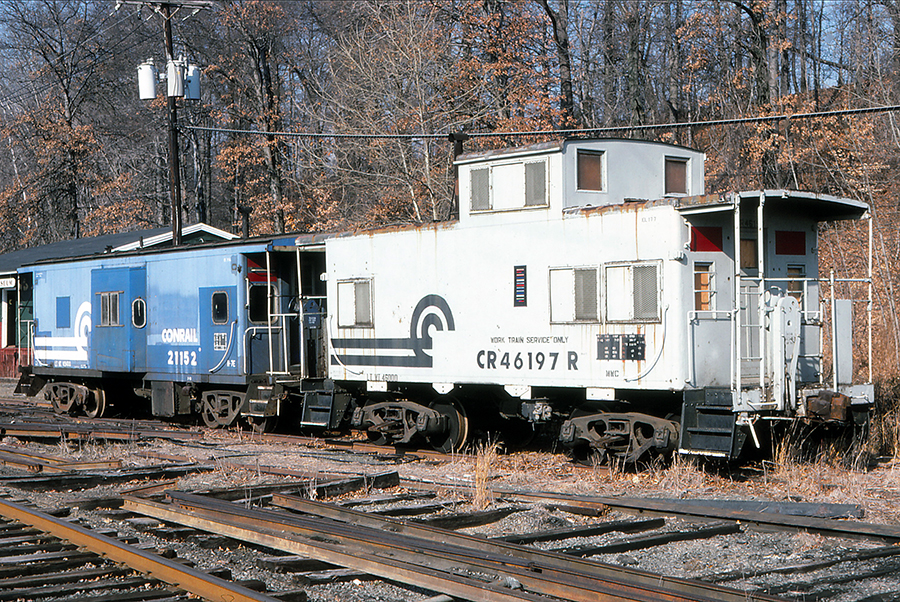
In the Fall of 2016, the Jersey Central Chapter donated the caboose to the Whippany Railway Museum.
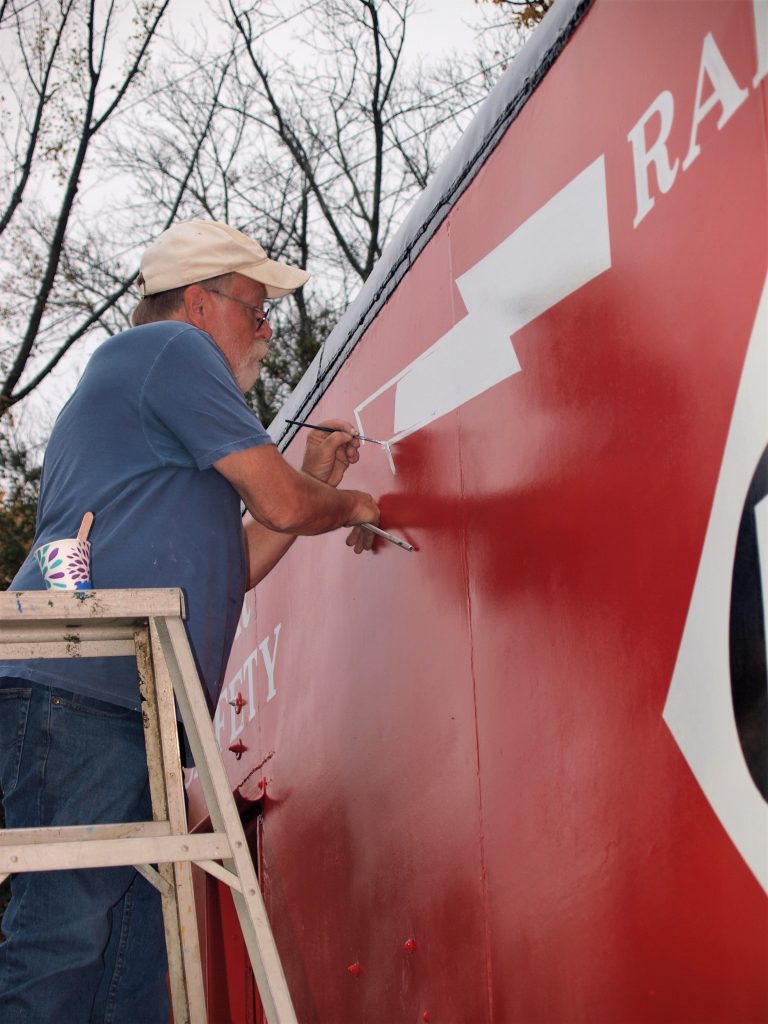
As refurbished by the Whippany Railway Museum, Caboose C177 (while not known if it indeed was ever fitted with a two-way radio for train crew communication) carries the Erie / Erie-Lackawanna “Radio Equipped” lightning bolt scheme. The Erie Railroad claimed to be the first railroad to be completely “radio equipped”, in that all of its dispatching posts, block and interlocking towers, road locomotives and cabooses
